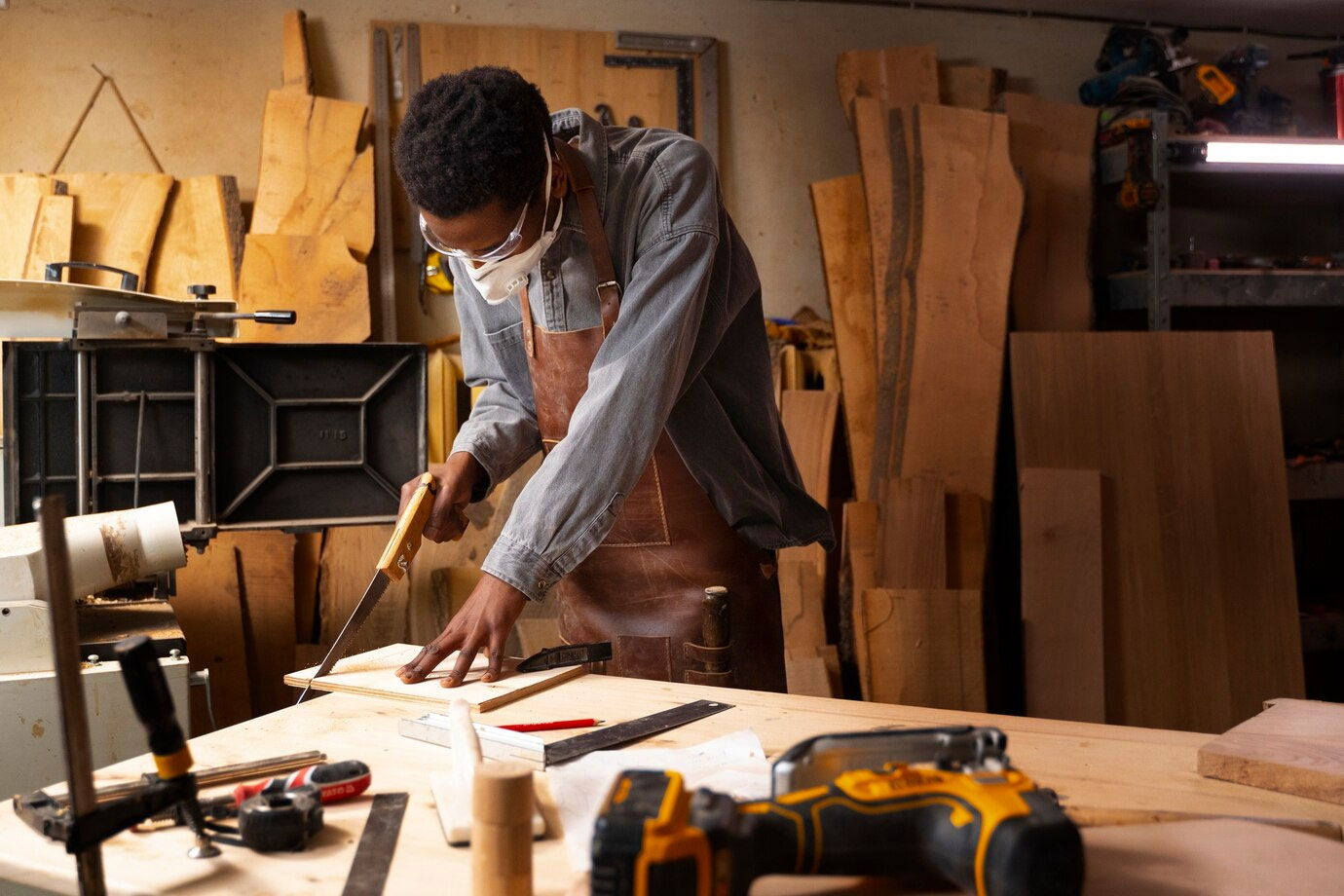A wood workshop is a hub of creativity where ideas transform into beautiful, functional wooden artifacts. To achieve these results, a variety of tools are employed, each designed to handle specific tasks involved in woodworking. From cutting and shaping to joining and finishing, the right tools are essential for efficient and effective work. Here, we will explore some of the most fundamental and widely used tools in a wood workshop.
**1. Saws:** Saws are perhaps the most iconic tools in woodworking, essential for cutting pieces of wood to size. There are several types of saws used in workshops:
– **Hand Saws:** These are manual saws used for cutting wood in a variety of angles and shapes. Popular types include the back saw, crosscut saw, and rip saw.
– **Table Saws:** A staple in many workshops, table saws have a circular blade mounted on an arbor and are used for making straight cuts. They are excellent for handling large pieces of wood.
– **Band Saws:** Known for their versatility, band saws use a long, sharp blade stretched between two or more wheels to cut intricate curves and shapes in wood.
– **Miter Saws:** Ideal for making precise angled and cross-cuts, miter saws are crucial for projects requiring tight joints.
**2. Chisels:** Used for carving or cutting wood, chisels must be kept sharp to achieve clean results. They come in various shapes and sizes, suitable for detailed carving, mortising for joints, or paring thin shavings from wood surfaces.
**3. Planes:** Planes are used to smooth and flatten wood surfaces. They remove thin shavings of wood to achieve a smooth finish or to fit pieces together accurately. Common types include block planes, bench planes, and smoothing planes.
**4. Sanders:** Sanders are critical for finishing wood surfaces. They smooth out rough edges and prepare wood for painting or staining. Handheld sanders, belt sanders, and orbital sanders are frequently used types in wood workshops.
**5. Drills:** Drills create holes in wood or drive fasteners. A versatile tool, drills come with a variety of bits and attachments to handle different materials and tasks. Cordless drills are particularly popular for their convenience and portability.
**6. Routers:** Routers are used to hollow out areas in the surface of a piece of wood. They are invaluable for creating decorative designs, grooves, and edges. Router tables enhance their versatility and control, allowing for more precise work.
**7. Clamps:** Clamps are used to hold pieces of wood in place while they are being worked on or glued together. They are essential for ensuring tight joints and accurate fits in woodworking projects. Types include C-clamps, bar clamps, and pipe clamps.
**8. Workbench:** While not a tool per se, a sturdy workbench is central to a wood workshop. It provides a stable surface for carrying out various woodworking tasks and often includes features like vises and tool storage.
**9. Measuring and Marking Tools:** Accurate measurement and marking are crucial in woodworking. Tools like tape measures, rulers, squares, and marking gauges ensure that cuts and joints are precise.
**10. Safety Equipment:** Last but not least, safety equipment is vital in any wood workshop. Safety glasses, ear protection, and dust masks protect against common hazards such as flying debris, loud noise, and sawdust.
In conclusion, a well-equipped wood workshop contains a range of tools, each serving a specific purpose to facilitate the creation of wooden items. Whether one is a beginner or an experienced woodworker, understanding and using these tools effectively is key to successful woodworking projects.

Leave a Reply